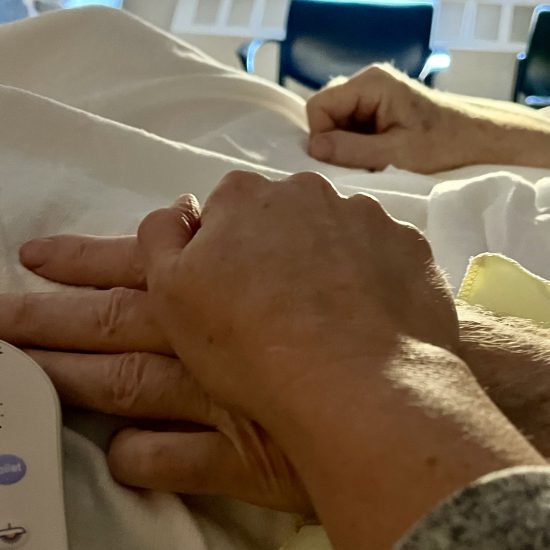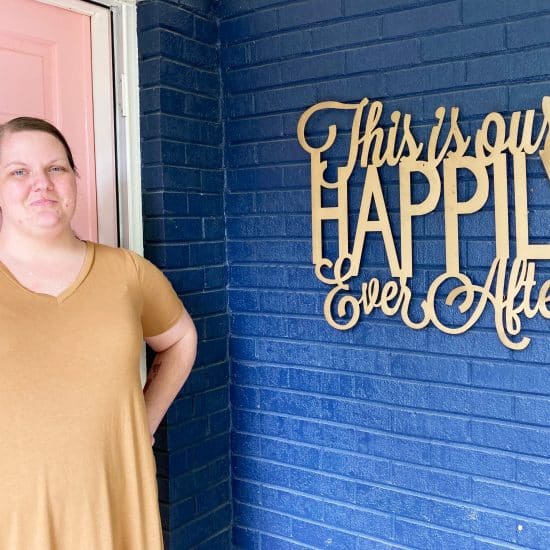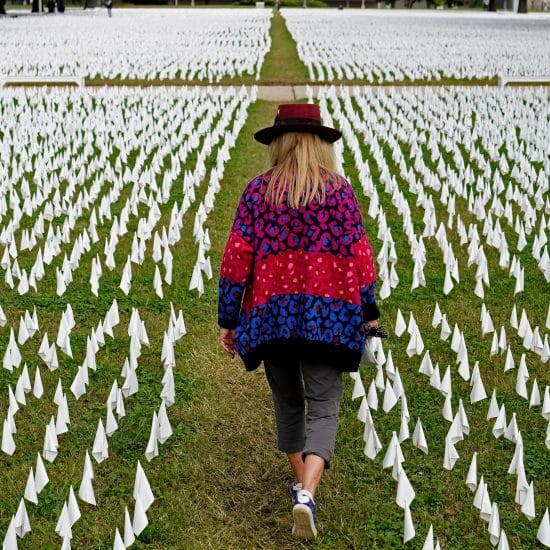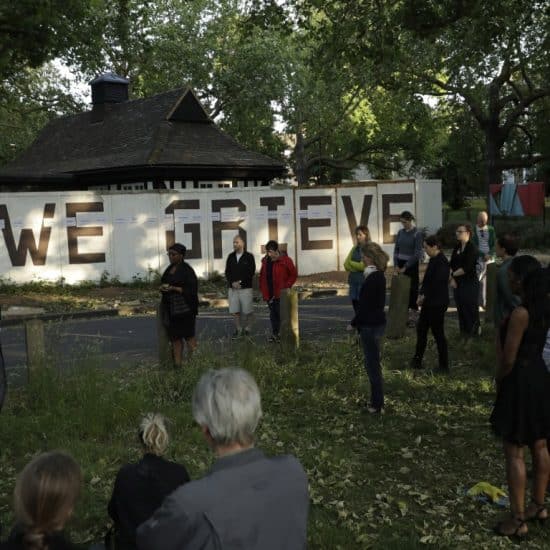
In the days after my dad died, an advertisement came up in my social media feed for a warm and comfortable hoodie that was on sale that week. It looked like just the thing that I wanted to tunnel down into and wrap myself up in my grief. In a spontaneous decision, I purchased my self-proclaimed “grief hoodie” and then proceeded to convince my brother to buy himself a similar one. We deemed our grief hoodies as an outward sign of our inner emotions — a way to signal what we felt within to those who were close to us.

Sarah Blackwell
All this grief hoodie talk got me thinking about how we used to have easy ways to signal to others that we were in mourning. Grief and lament used to be public — something that the community knew and even participated in. Now there are so many people who have experienced great loss, but we do not have any clue about their struggles, their fears, their overwhelming grief. How would we treat each other differently if we literally wore our hearts on our sleeves?
In the days of the ancient Israelites, the common outward sign of grief was to put on sackcloth and then pour ashes on one’s head. In Genesis 37:34, we see the first mention of sackcloth, when “Jacob tore his garments, and put sackcloth on his loins, and mourned for his son many days” after hearing of Joseph’s presumed death. The practice continued through the time of King David. After the death of Abner, a trusted general of Saul, David tells the people to tear their clothes, put on sackcloth, and mourn (2 Samuel 3:31). The people all joined in communal lament, of which clothing was an important part of the ritual.
The practice was not only used when someone died; it could be done for anything that needed to be grieved. In response to Haman’s decree against the Jews, Mordecai “tore his clothes, and put on sackcloth and ashes, and went through the city, wailing with a loud and bitter cry” (Esther 4:1). He grieved before the horrible event even took place. Even Job’s oft-criticized friends started off well by joining him in mourning with ashes and sackcloth. The outward appearance was just one part of an expressed lament. It was a practice that continued in some places up to the 18th century. People did not keep their grief inside in the same way that we try to minimize these big feelings today — stuffing them down only to be expressed in private.
No one probably did grief clothing better than the English in the Victorian age. Victoria herself wore her mourning dress in black for over 40 years after her beloved Albert died. The Victorians had a wide list of rules and expectations that would determine the number of days of mourning based on the closeness of the relationship. The clothing color would slowly shift from all black to lighter shades of purple or gray. After a year, they sometimes just added a black flower to their hat or a black piece of jewelry to let people know that they were still in mourning. Men often wore black armbands right below the elbow. There was no room for doubt in the Victorian age where you were in your grief journey.

Photo by Asfand Yar on Unsplash
Around the world, we see various rituals of mourning associated with different colors. In parts of Asia, white is worn at funerals and for the weeks afterward. Among the indigenous peoples of Australia, white body paint is often put on. In Ghana, red is the funeral color, while purple is used in some Catholic areas of South America. Egyptians sometimes wear yellow or gold to denote grief. Black remains the choice of people in many parts of Europe.
Our American culture is notoriously bad at grief. I’m not sure if it is the plucky face-adversity-head-on-attitude that accompanies the “pull yourself up from your bootstraps” mentality. Our rugged individualism gets in the way of joining with community in our sorrow. Other cultures lament so much better than we do. When our adopted Burmese Pipi, or grandmother, died, we could hear the wailing of the people before we even entered the funeral home for the visitation. It was both shocking to hear such an outward expression of grief and oddly comforting to be in the presence of those willing to share the deep sorrow we all felt.
Recently, I was talking with someone whose grandmother died on the first anniversary of my own grandmother’s death. Since her grandmother lived far away and no one in her present place knew her grandmother, it seemed in some ways not real. There was no easy way to let acquaintances and co-workers know her inner turmoil. We remarked together how much easier it must have been to grieve when people knew what was going on in your life. It would be so nice to have an easy way to signal to people to tread gently as our hearts were raw and exposed. What if there was a universal sign that everyone knew and appreciated?
I’m not suggesting we bring back the sackcloth and ashes. It sounds horribly uncomfortable and hard to get out of your hair. However, I would be good with another way to signal to each other we remain in a time of grieving. Perhaps a wristband or ring might help, something that could be worn in a variety of settings. I am open to all suggestions. Until that day, I guess I will keep telling people in my life about my grief hoodie. Some of them will come to know my heart — and might even take to wearing one themselves in their next time of grief.
Sarah Blackwell is a contributing writer at Word&Way and a graduate of the Gardner-Webb School of Divinity. She teaches in the Religion and Philosophy Department at Wingate University and is a D.Min. student at McAfee School of Theology. Her summertime alternative to her grief hoodie will be her dad’s old St. Louis Cardinals hat. Her intergenerational faith formation book, God is Here is available through Amazon and other online book retailers. Follow her writings at proximitytolove.org.






